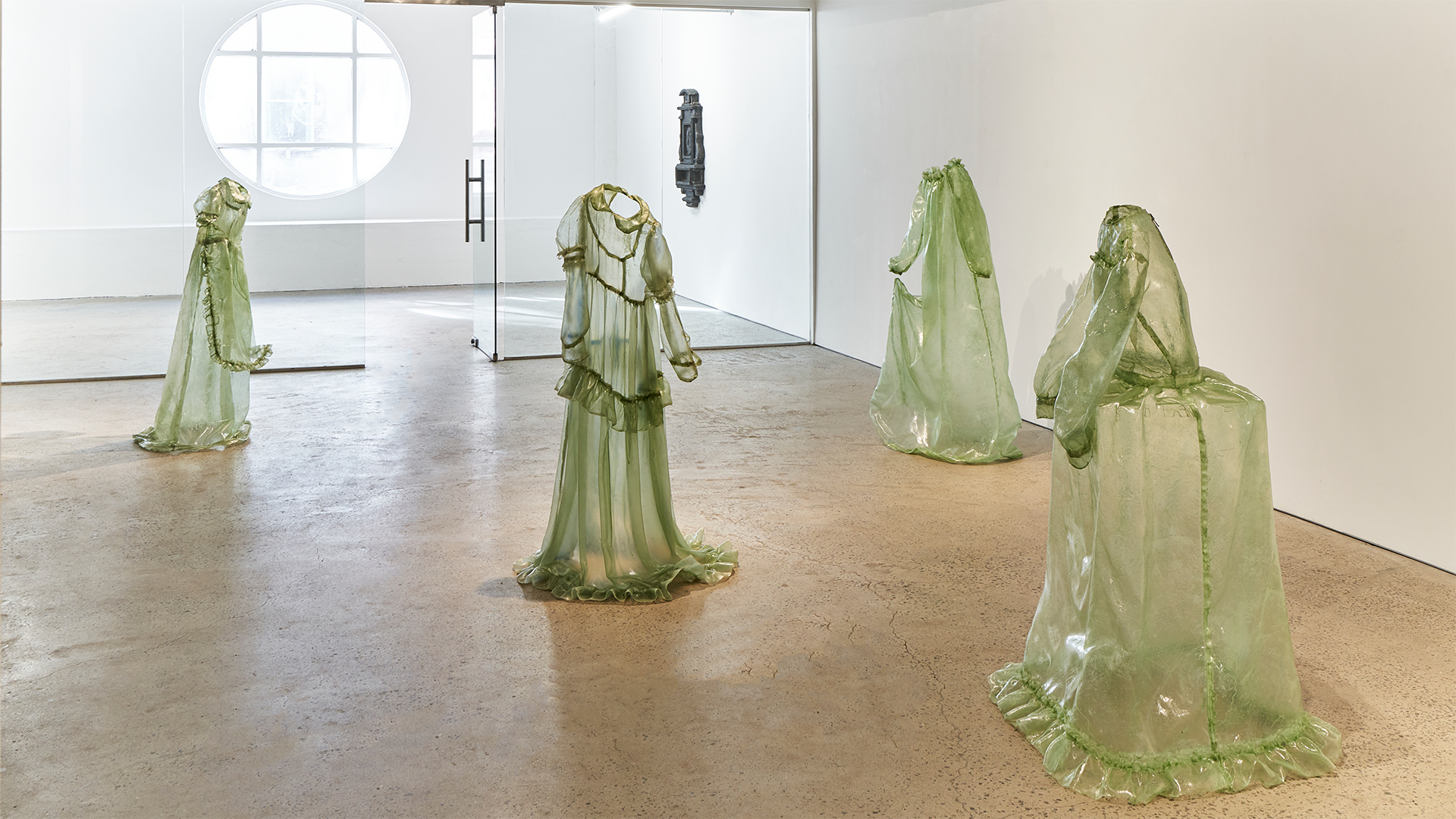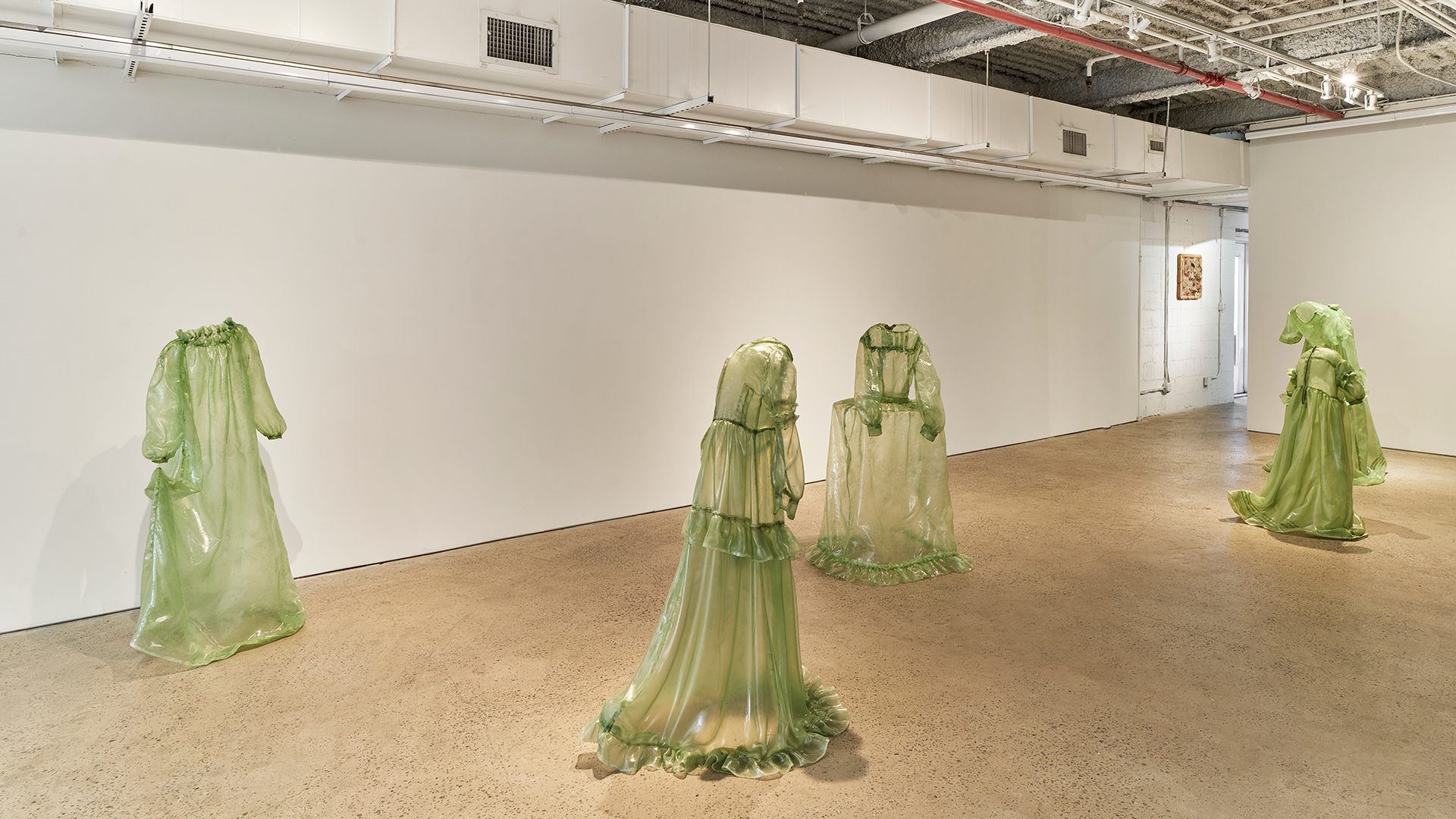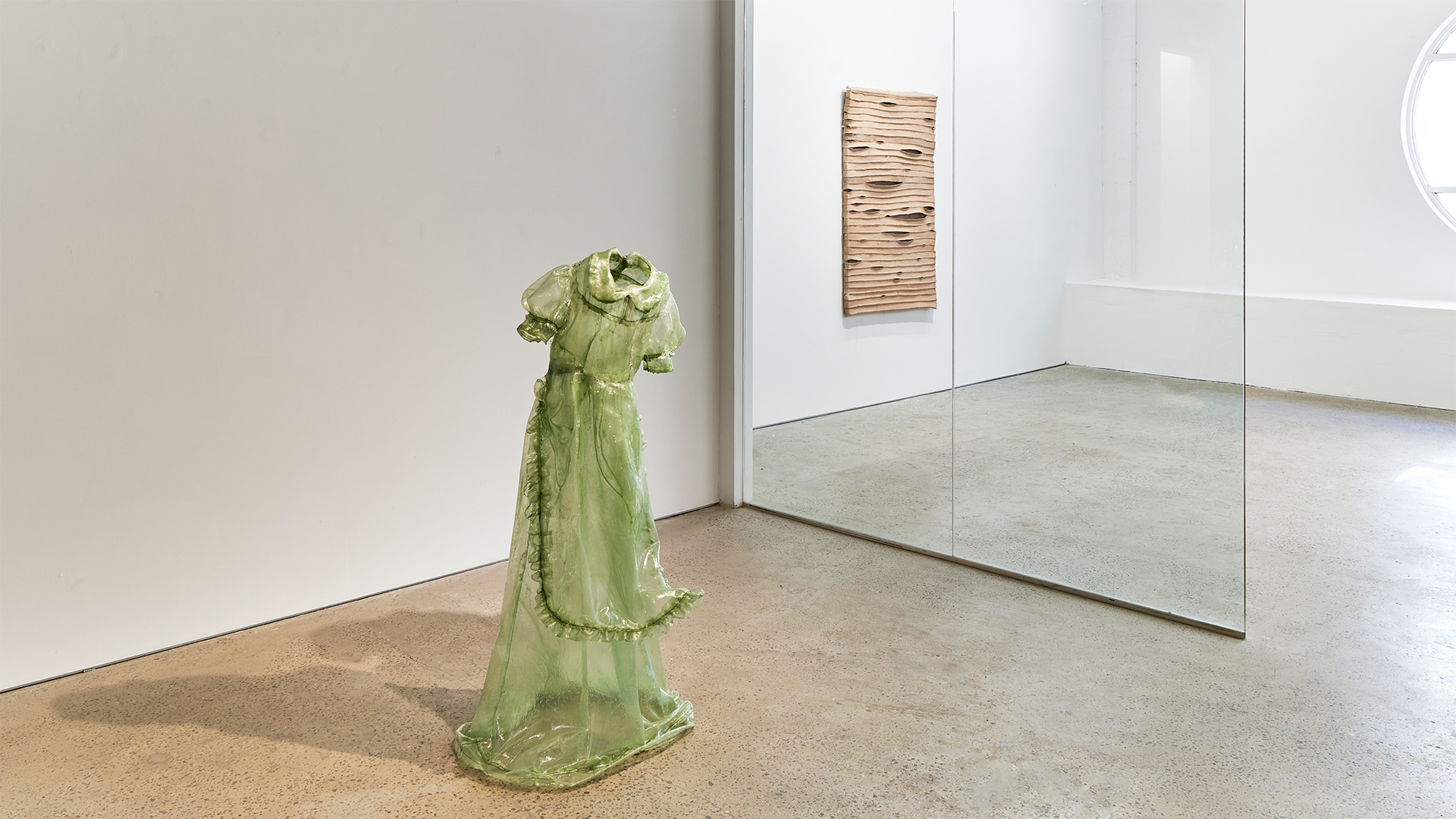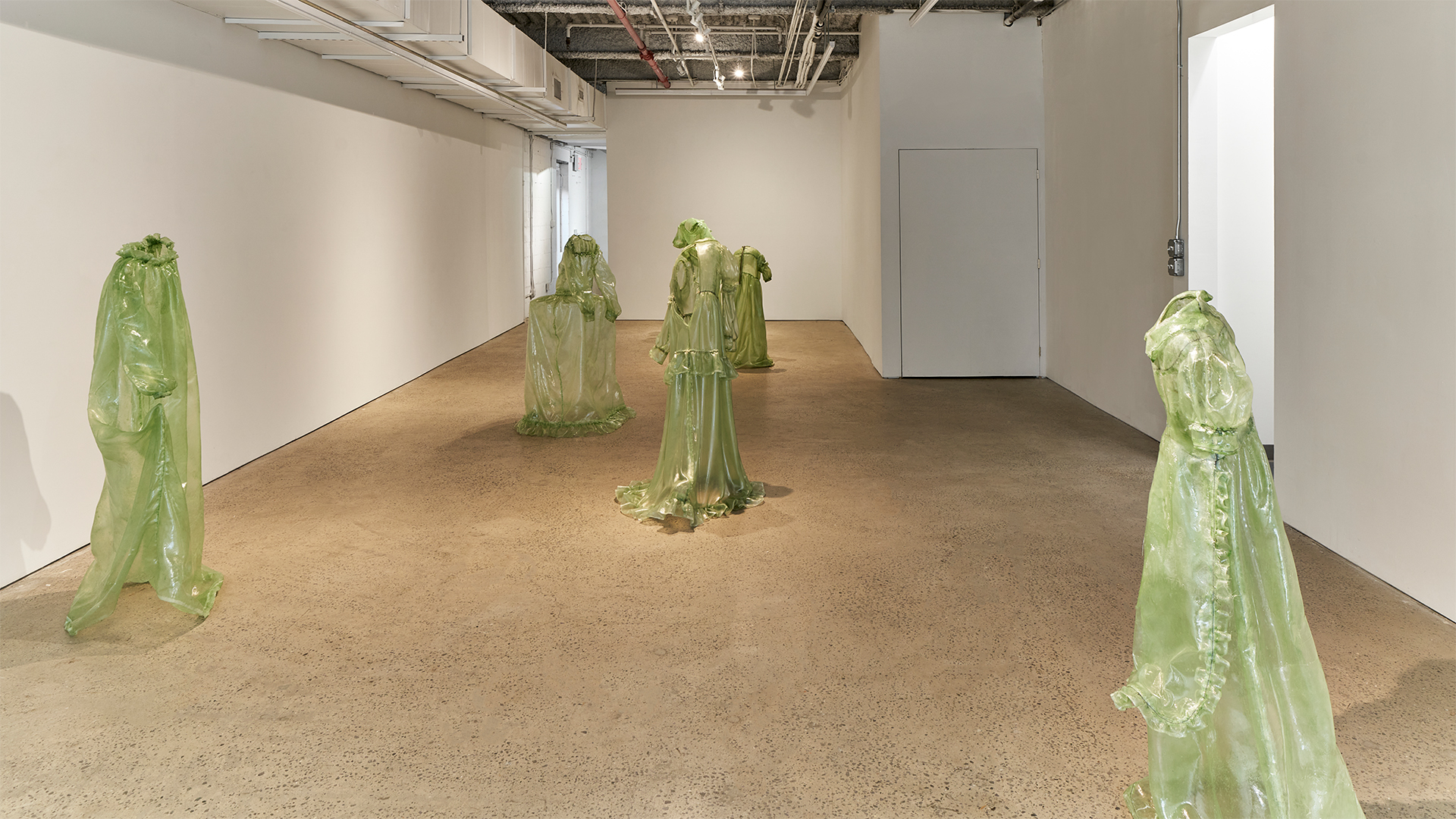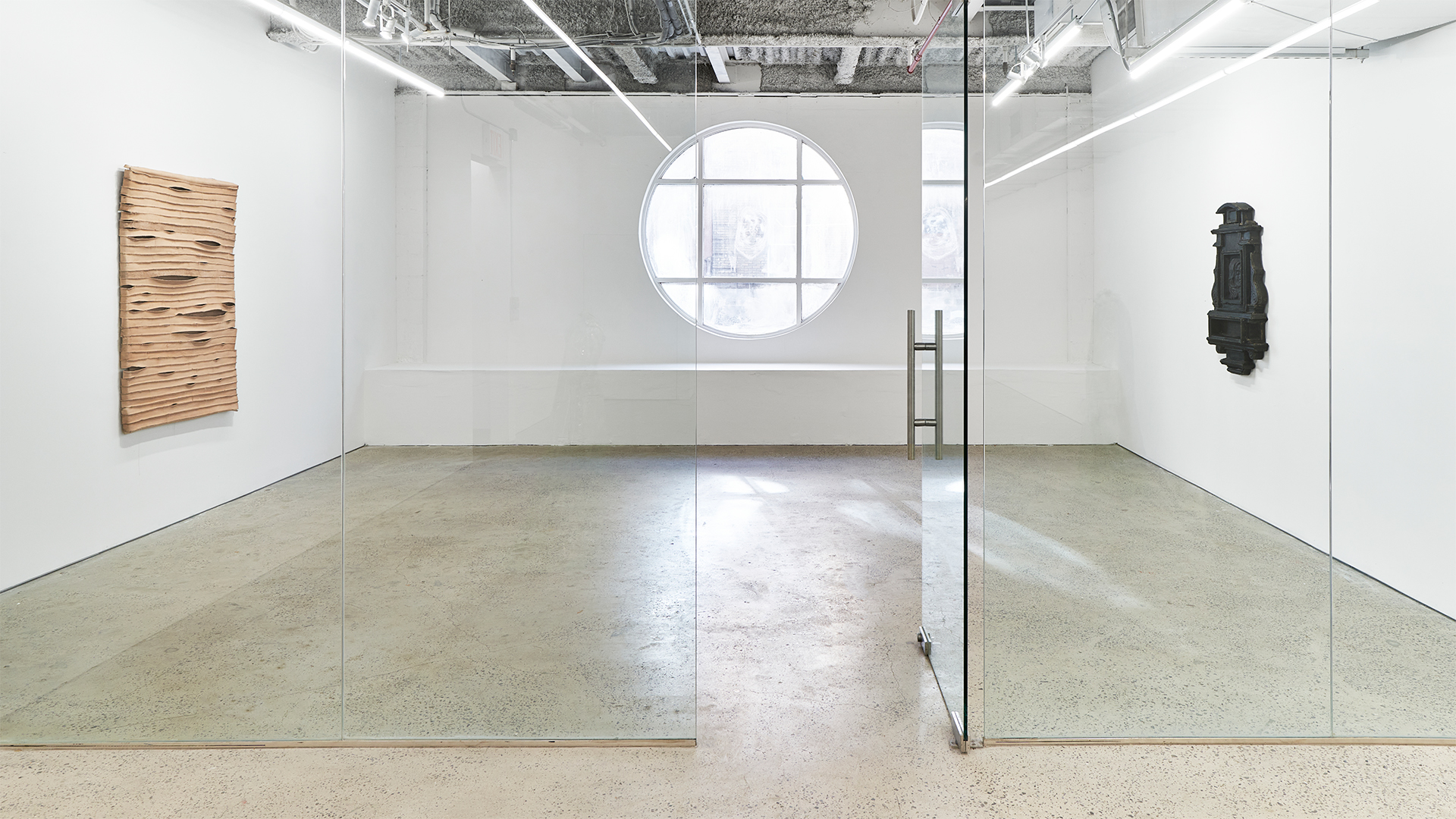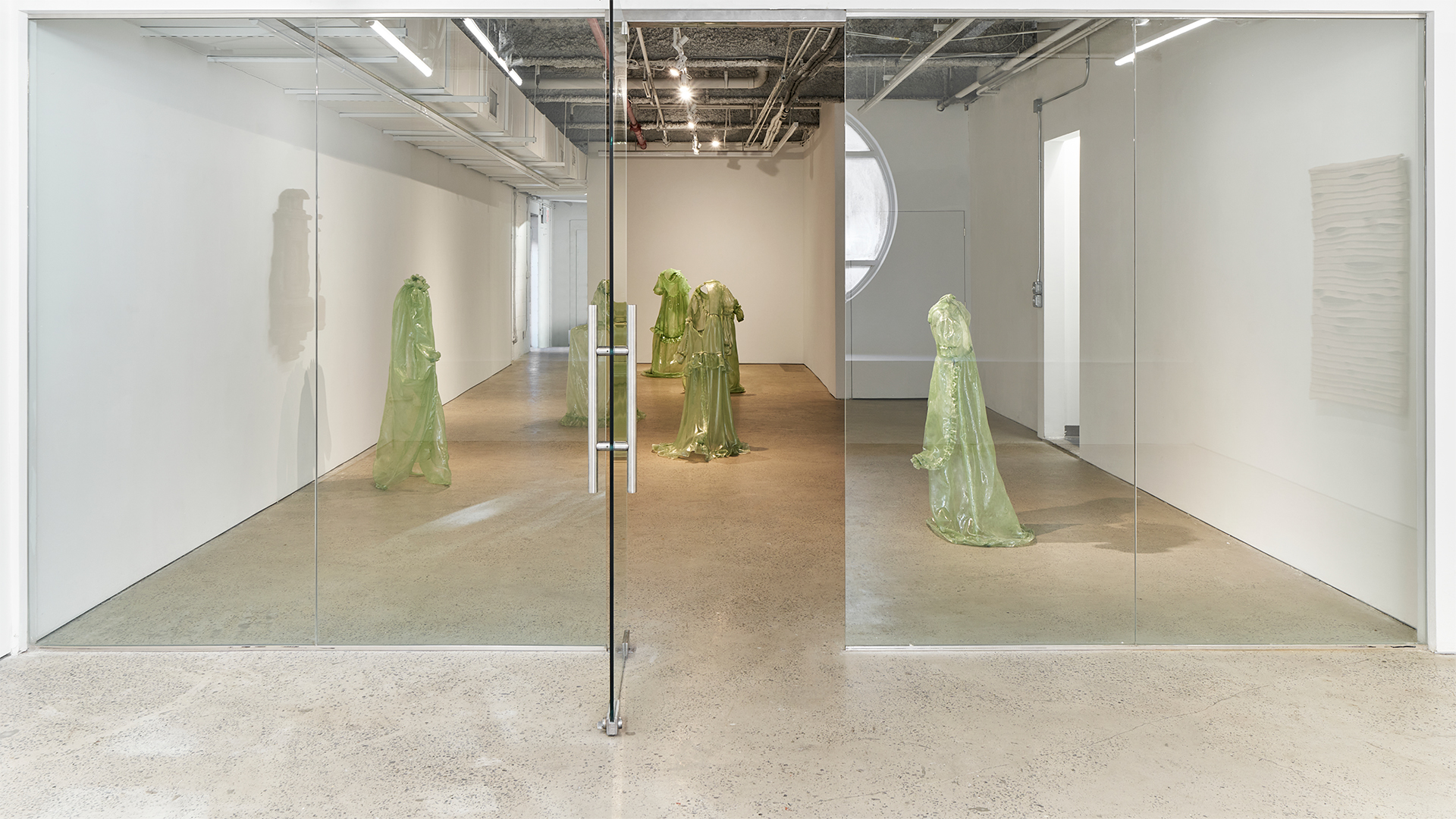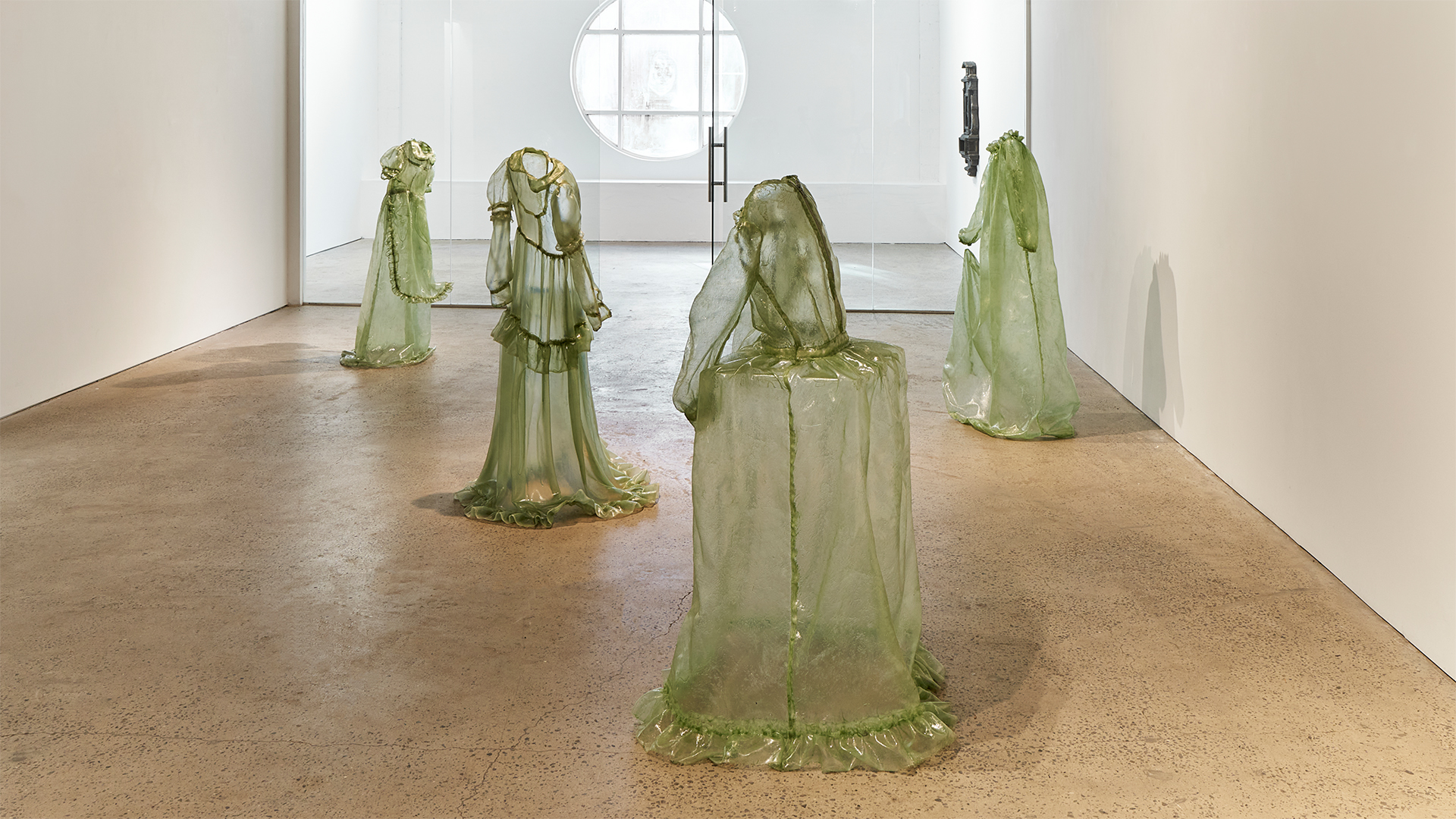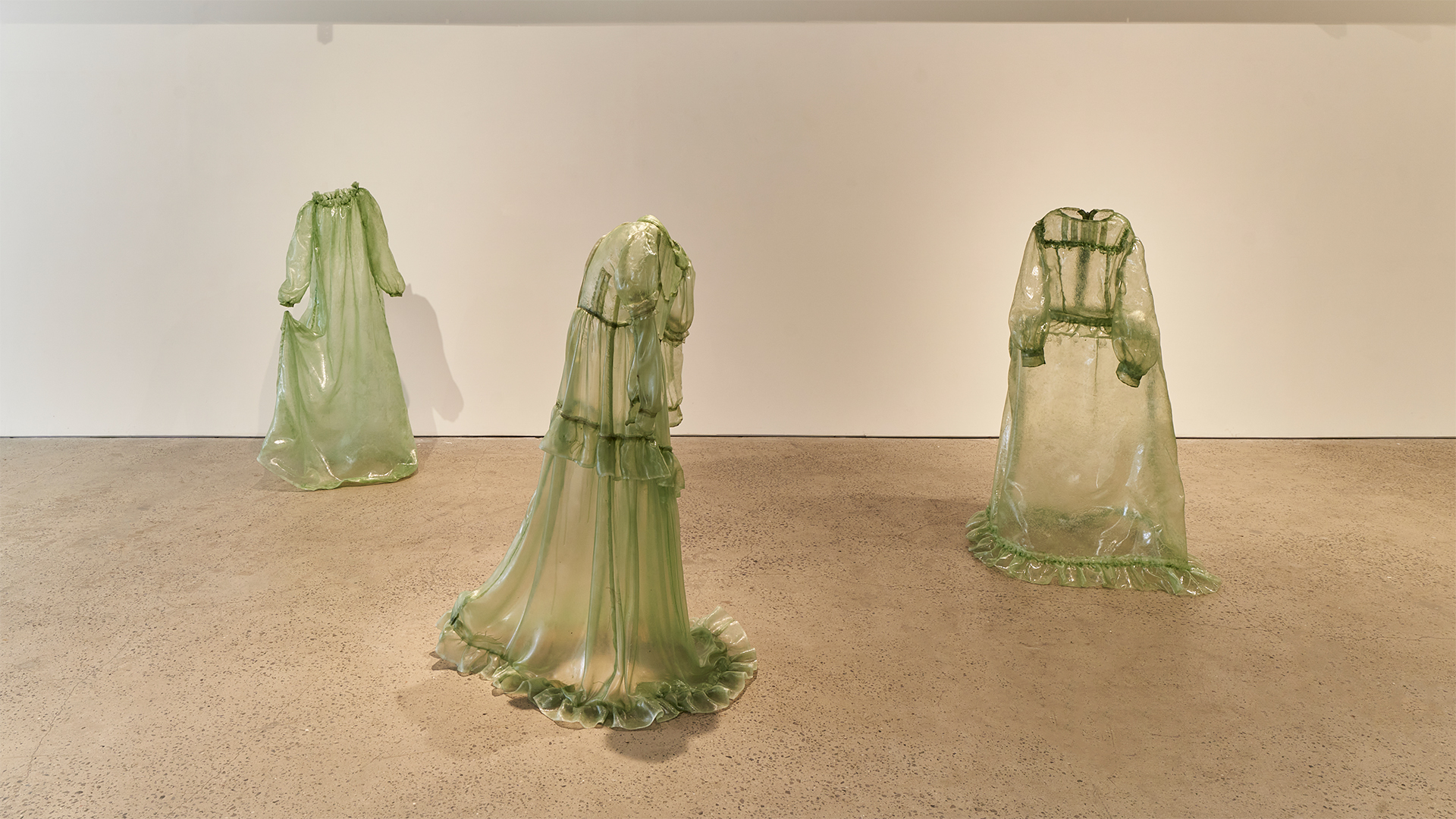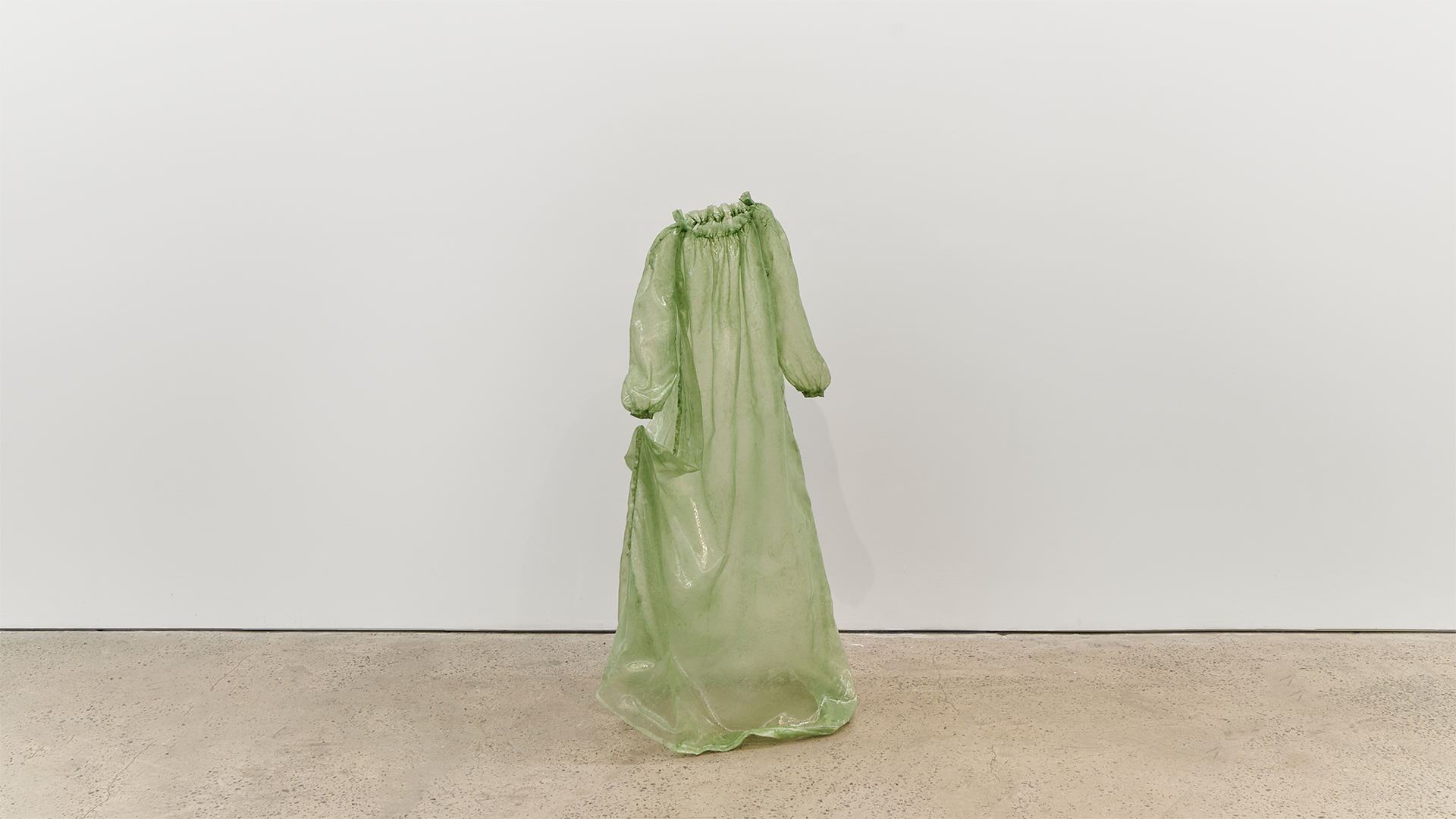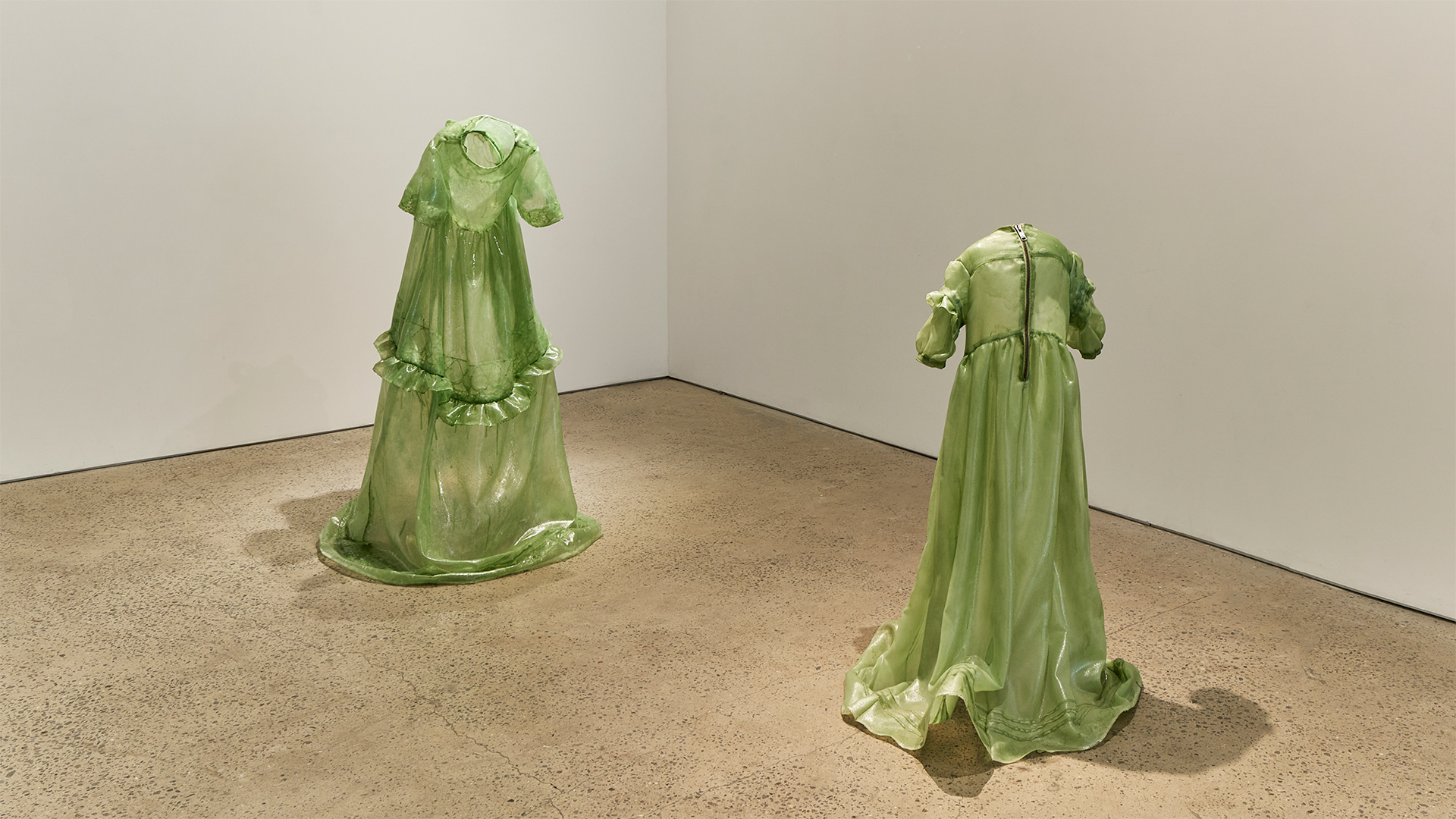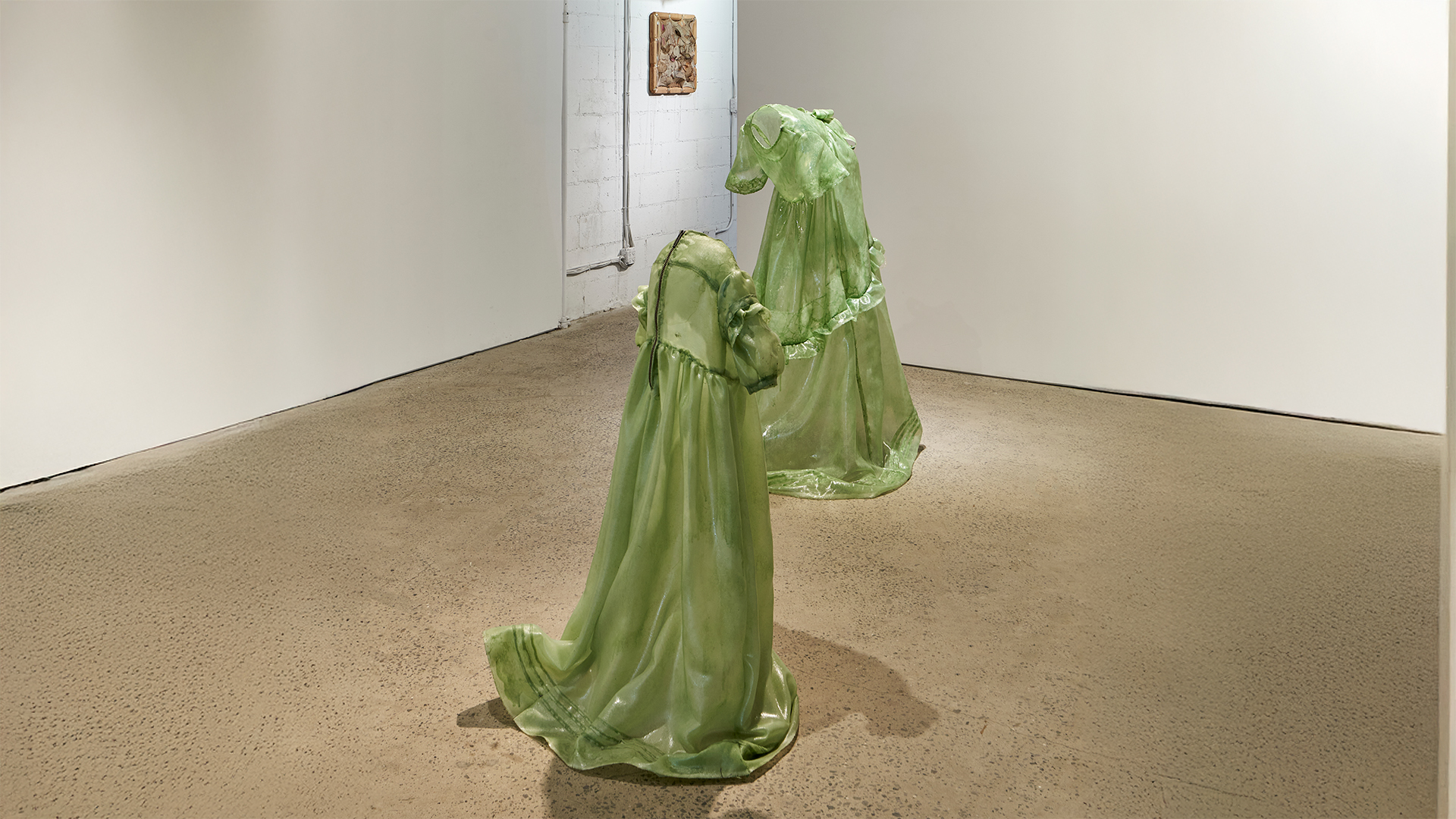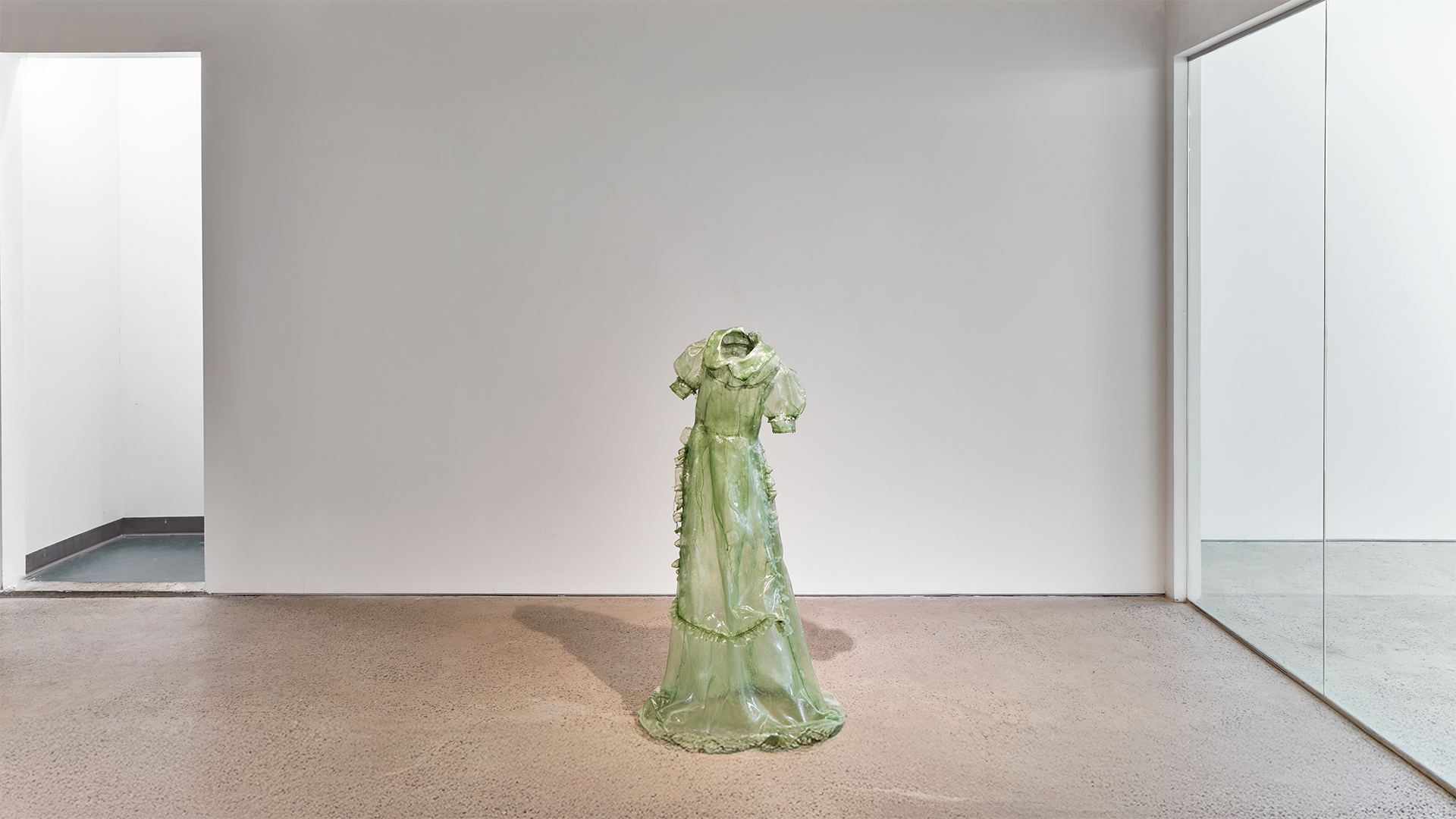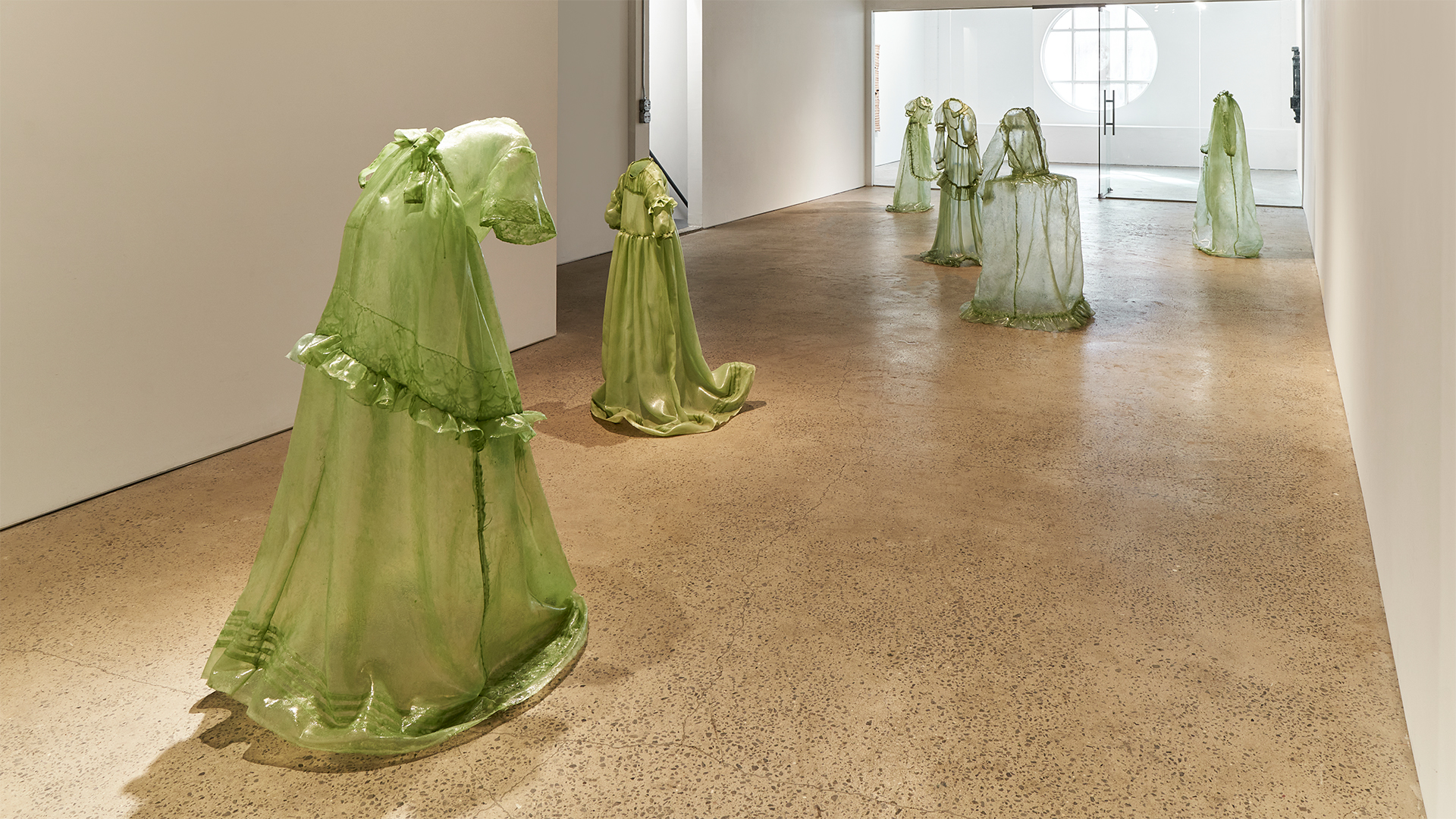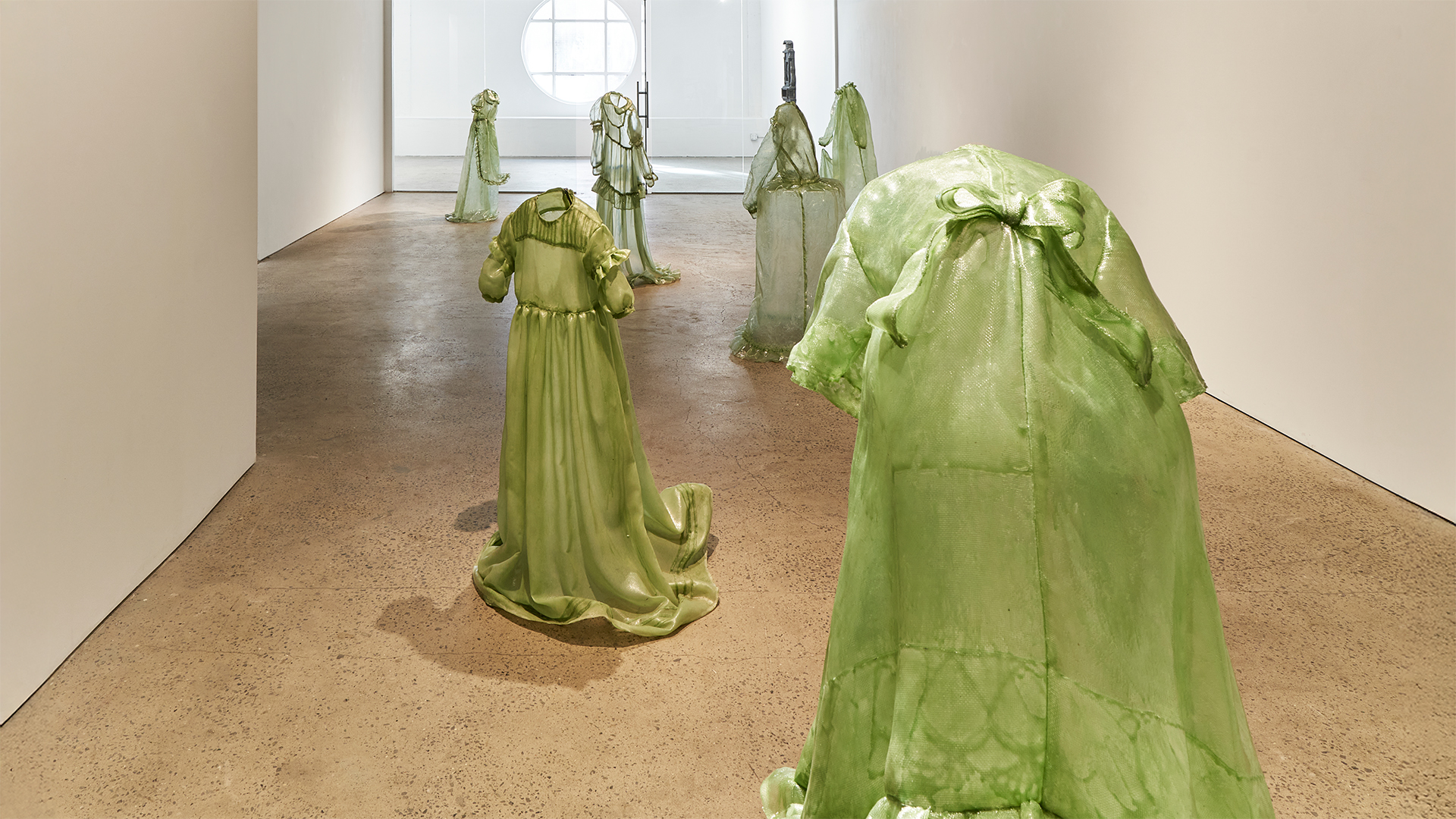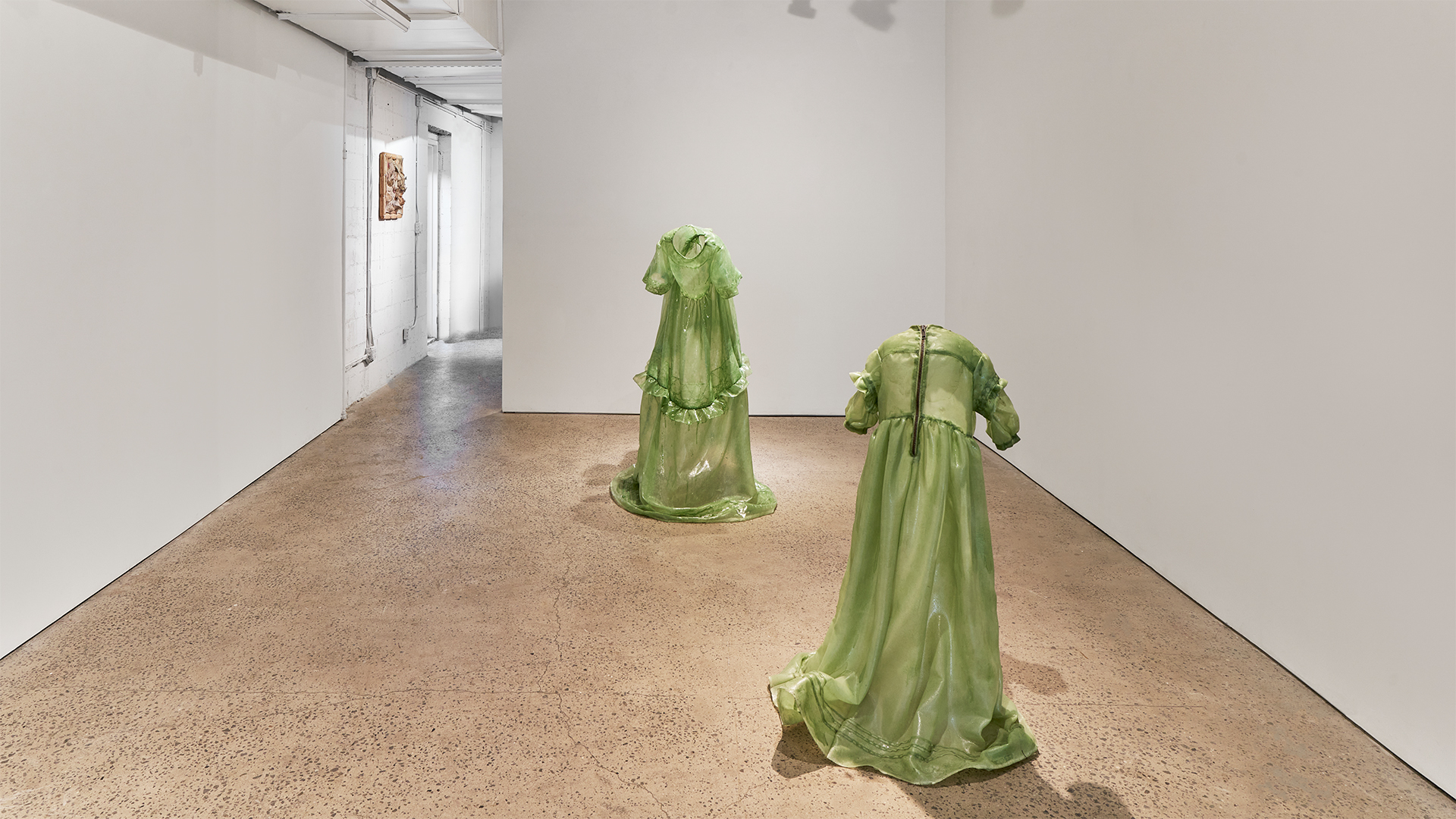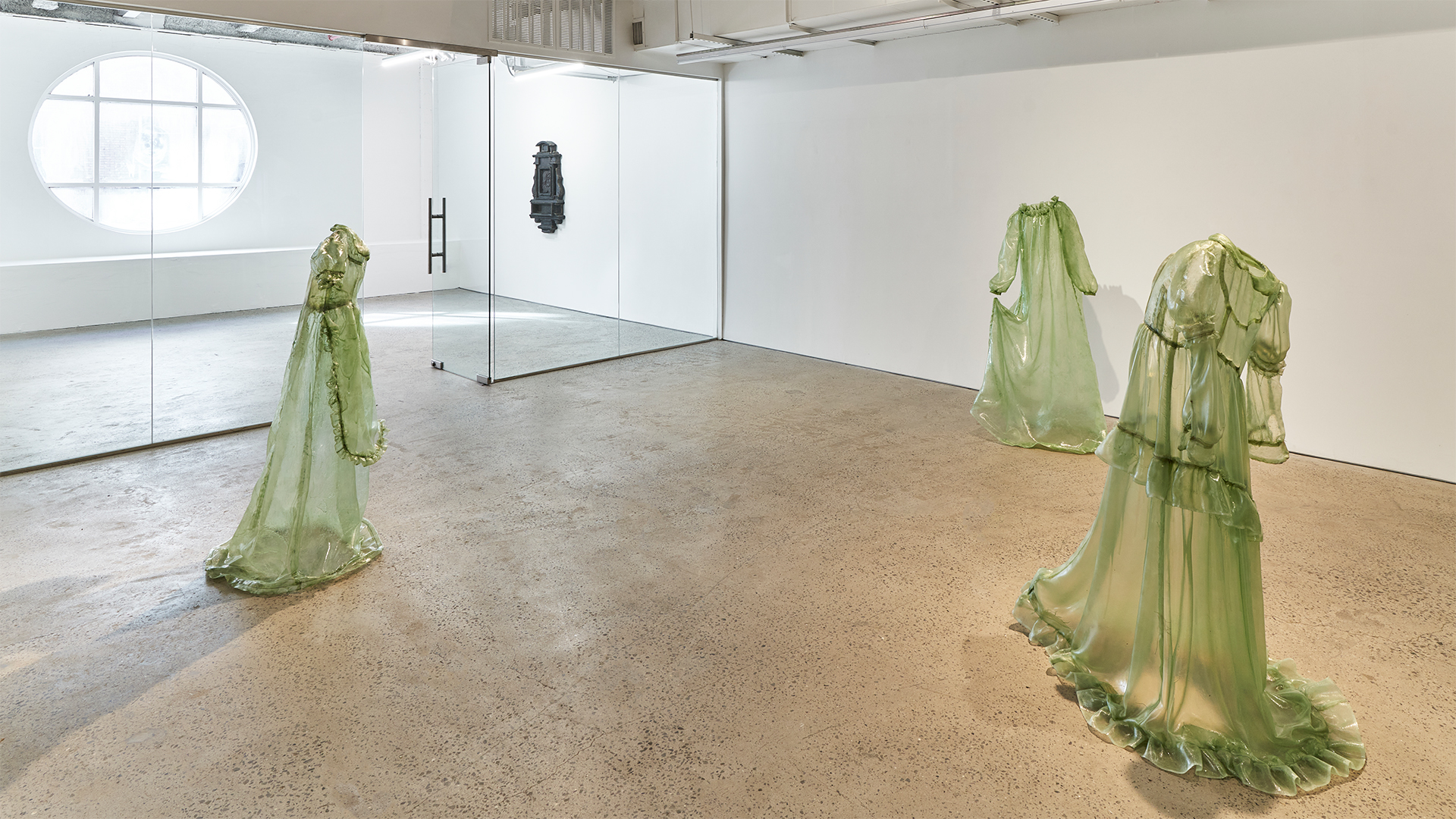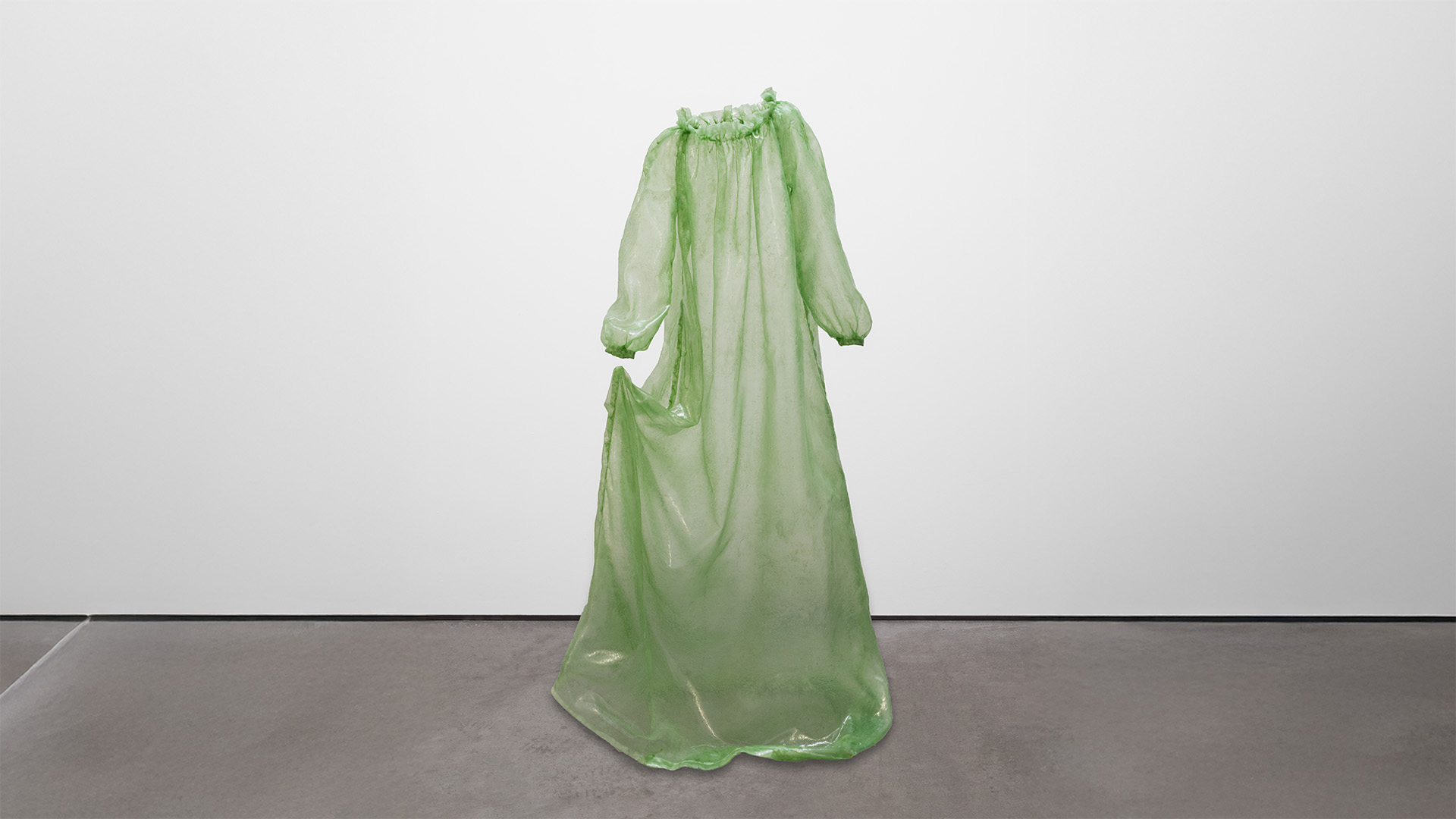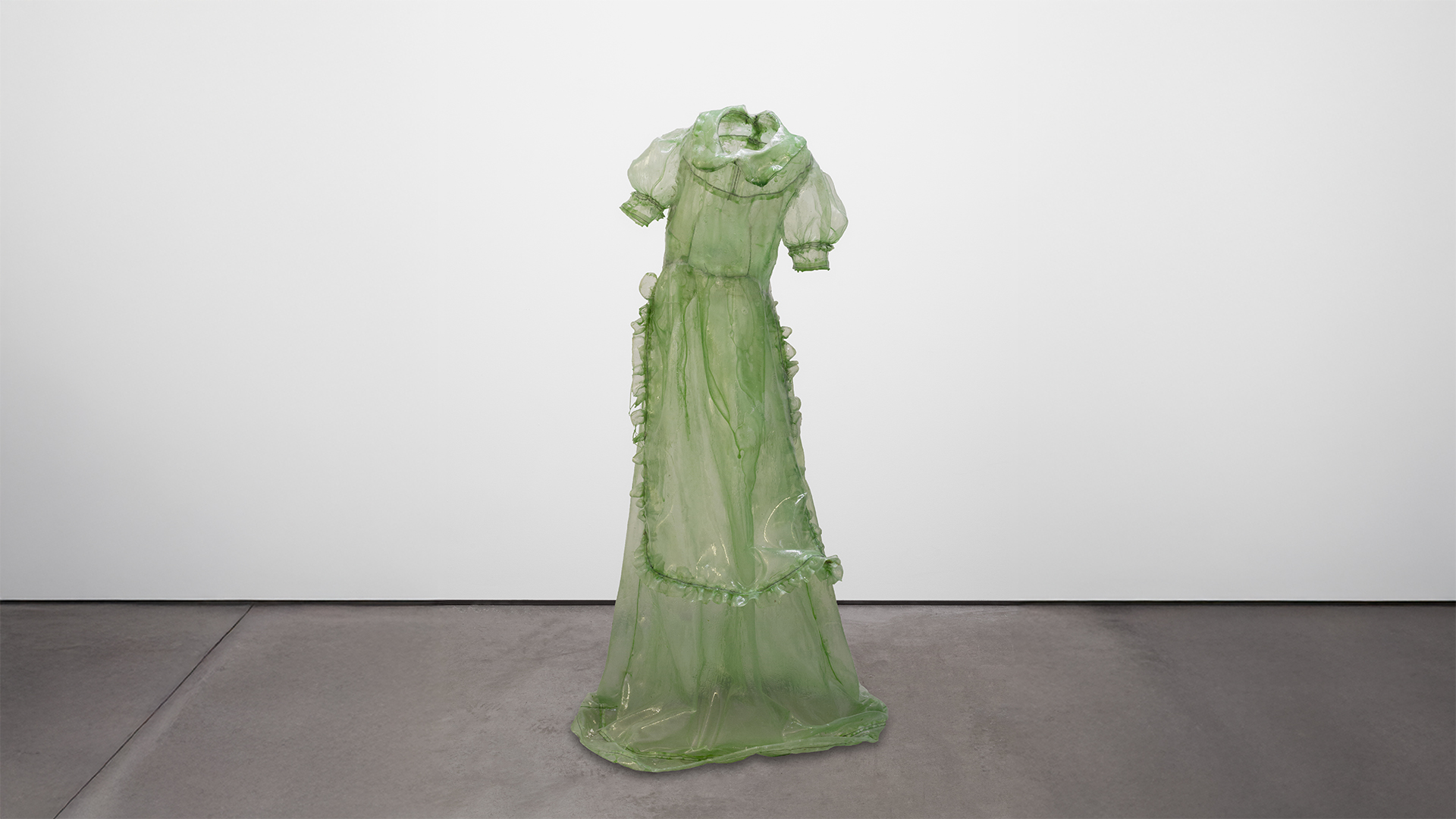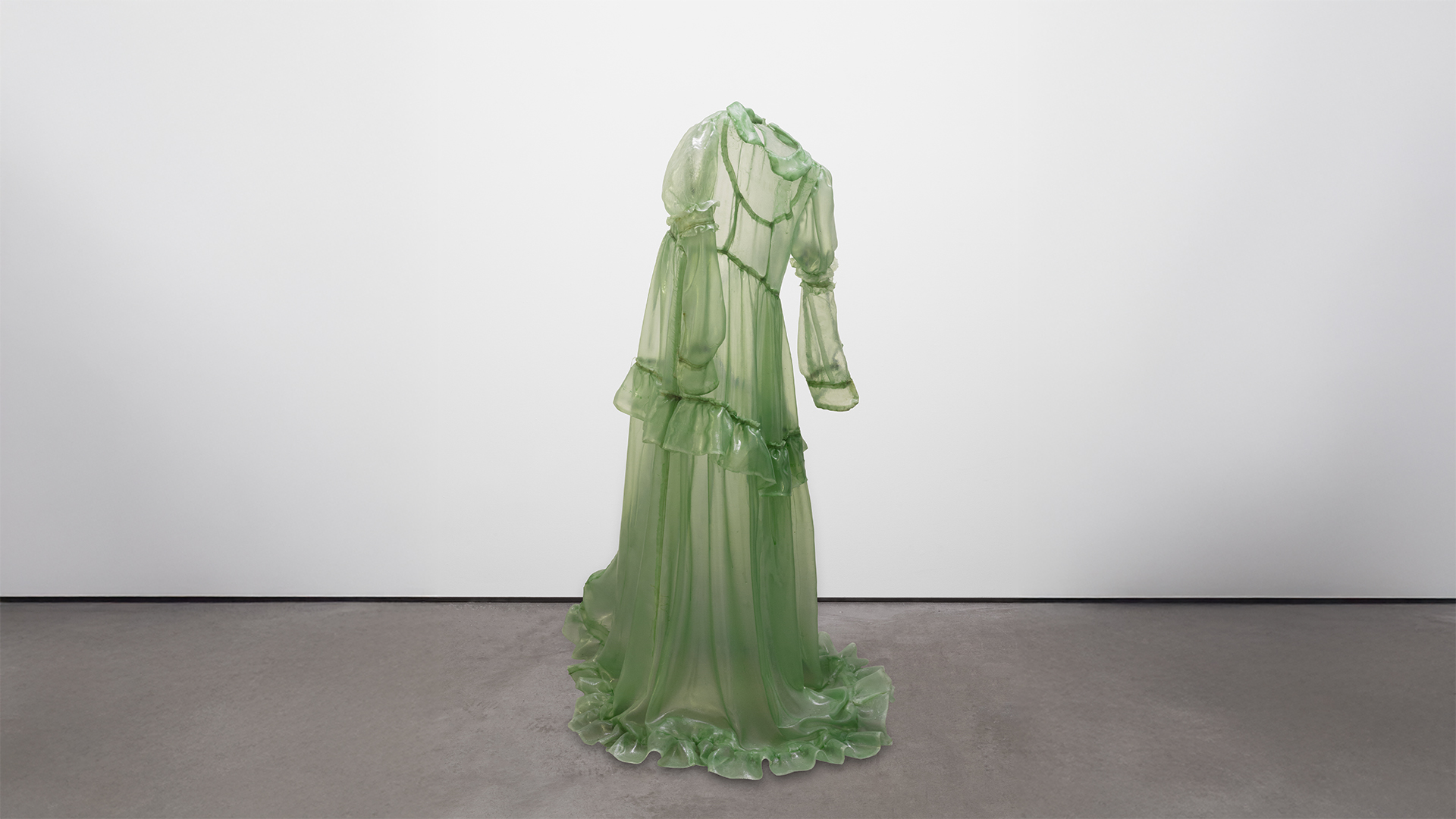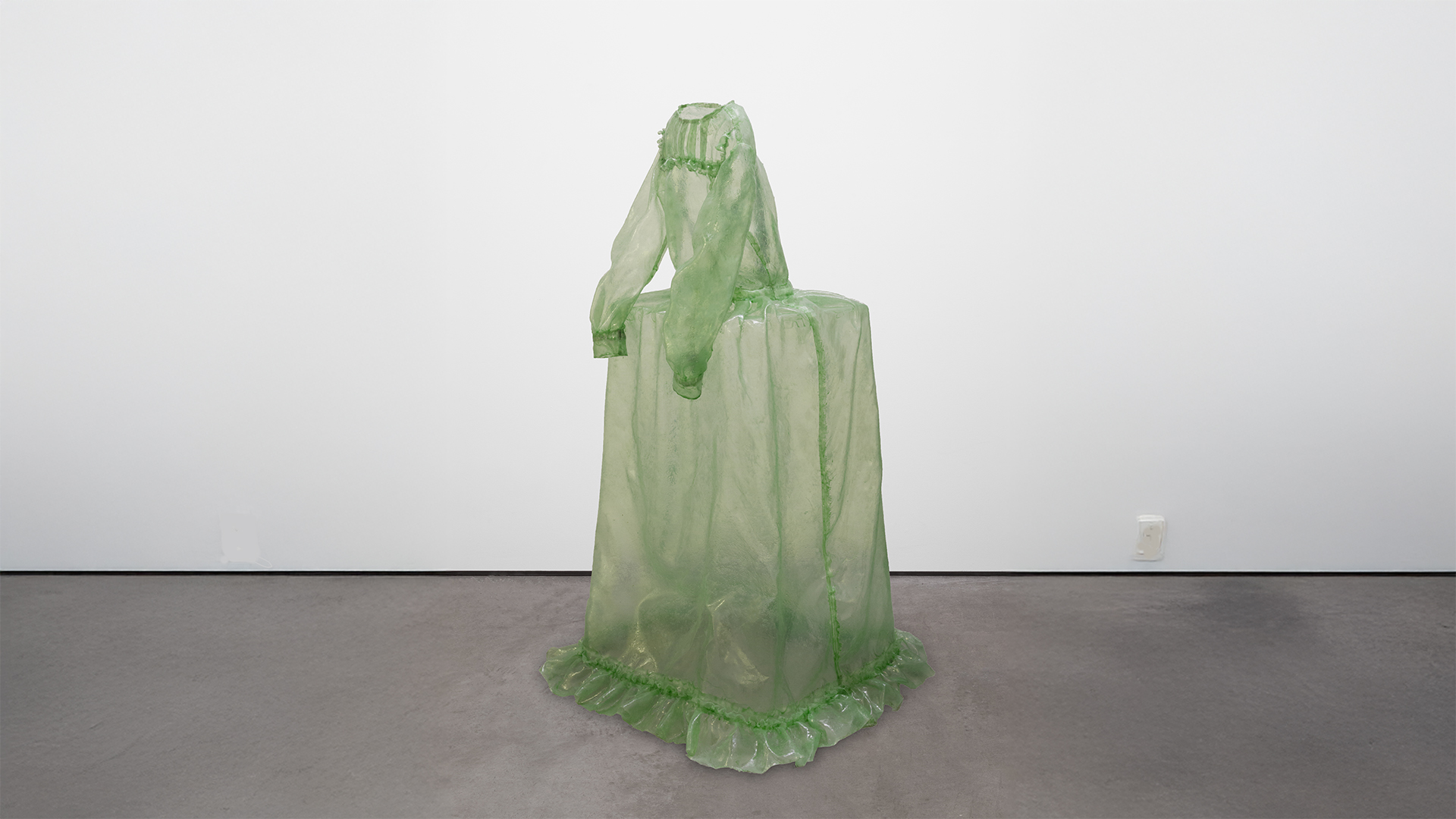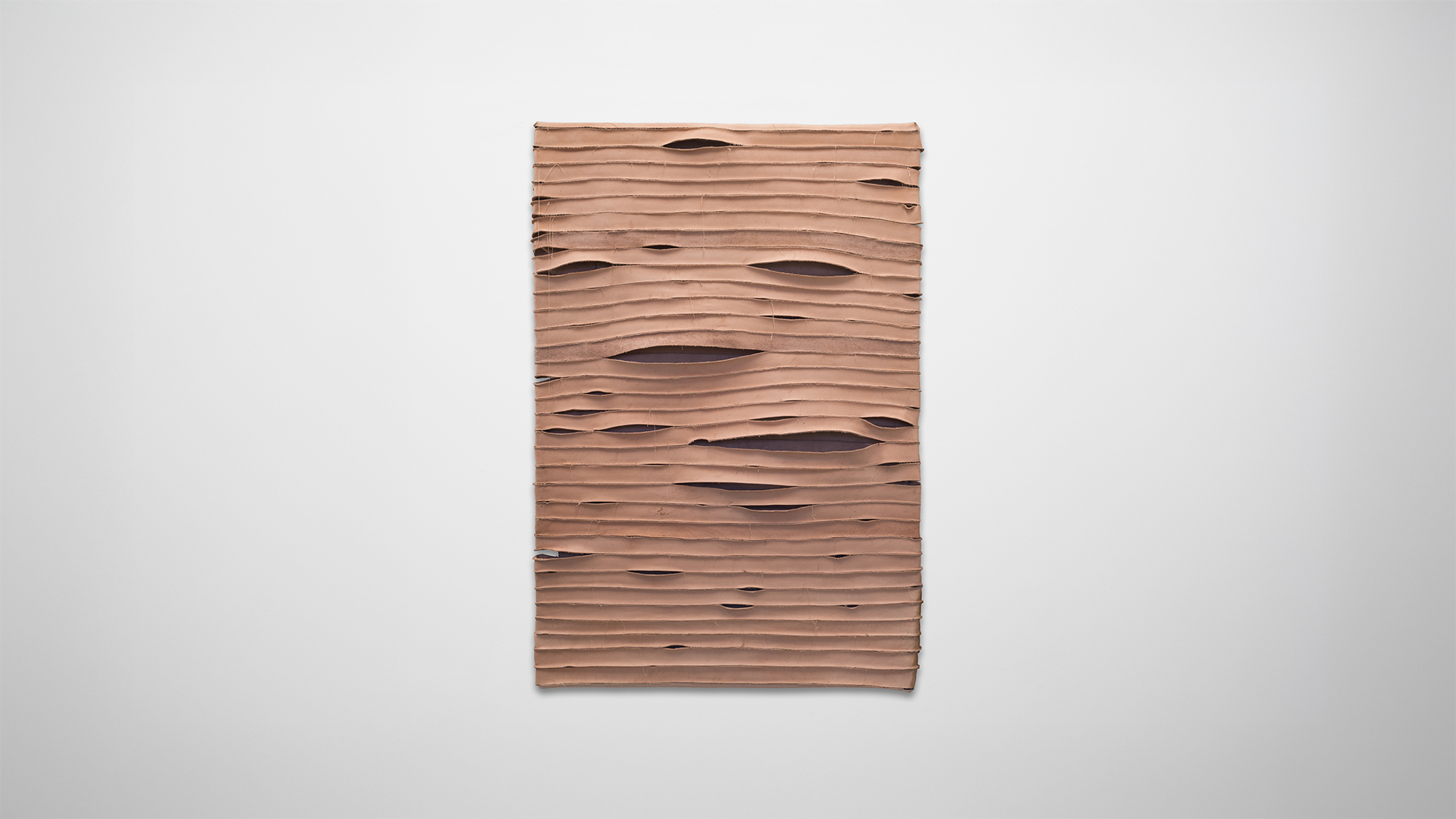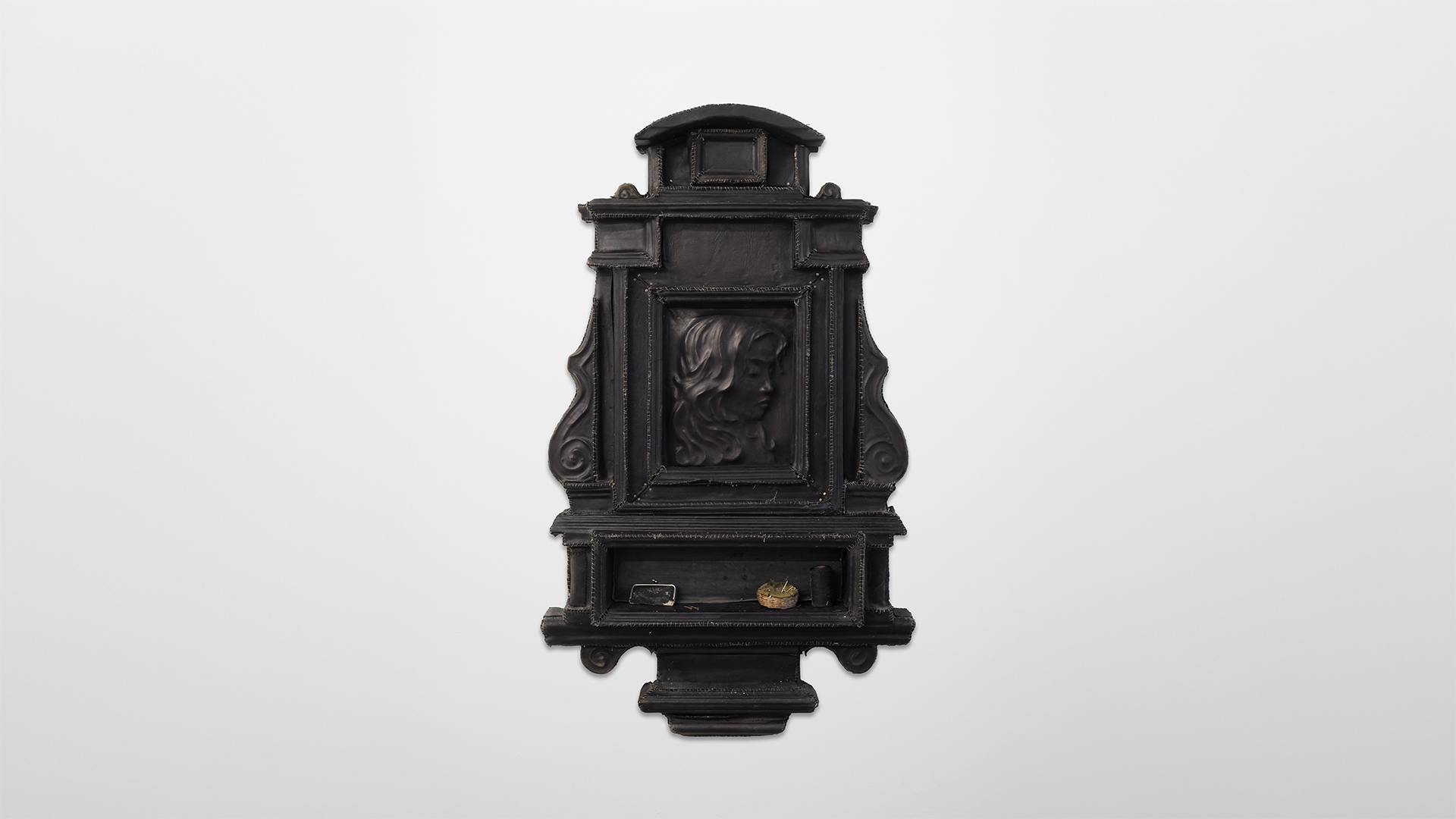The character Sadako from the Japanese horror film Ring walks rigidly, with her back hunched... an image that stuck with Brandon Morris during the making of his installation Actress. Walking into a room of whirling dresses that have been stiffened into stillness, like a coven of dervishes frozen in a forest, one wonders what might have just transpired.
Peering into the neck holes of the frilly gowns, we see no body, no trace of limbs, nor flesh nor blood. Was there once a persona that filled these silhouettes? Or do these hardened fabrics connote spirits searching for a body, or a host. Plastered in green resin, the supernatural hues cast from the translucent statures instill a sense of unease.
San Diego-born, New York-based Parsons graduate Brandon Morris has studied and practiced the craft of dressmaking. In Actress, Morris applies this skill to garments that are not meant to be worn. Morris borrowed and edited vintage Victorian children's gowns: in his versions, the shoulders are shrunken, waistlines accentuated and slim. The patterns were sewn together with an industrial sewing machine, durable enough to handle the thick weave of fiberglass and able to translate the heavy material into fluid pleats and trims. Morris leaned, slumped, and braced the garments with a temporary internal mannequin while stiffening the cloth with resin. These remnant shells are a poetic rumination on space the anxieties it can hold, and the fears it can convey.
Morris' attention to detail offers clues into his proposed enigmas. The heavy industrial zippers and the crooked contortions express discomfort. The dress constructions- large elaborate bows and pleated trims-are reminiscent of the statues of antiquity in their ability to convey movement and emotion through mere pleats, folds and drapery. One might consider a contemporary take on the marble hellenistic statue Nike of Samothrace, a headless goddess in flight. Accumulated fabric is a surrogate for a face and body.
In Actress, two wall pieces flank Morris' ghost dresses. A hollow 'painting formed entirely of hatdened leather strips abolishes the canvas or its frame. Like the fiberglass apparitions, this wall work gains its potency from its physical emptiness. Each thread wraps around, the back forming the support for the front, or vice versa, needing no additional support other than itself. The suspended leather shell takes on the palette of flesh, and when stitched together furthers the tragic element of the milieu. Again, we find murmurs of flesh without a body.
Portrait of Isabella transmutes the artist's partner into an icon of devotion. Constructed as a Renaissance altar its wooden structure sheathed in leather this relief panel brings the fetishization of femininity into fray. Isabella's stylized visage, modeled from a cameo portrait and molded into the frame by leather, admits the imperfection of memory. Despite her solemn downward gaze, the countenance of Isabella is the only hint of vitality in the room.
Brandon Morris' dresses evoke not life but its residues, whispering on the verge of both recollection and oblivion. Once a life-force is removed, tragedy will always ensue. Our own mortality haunts and teases Us.

